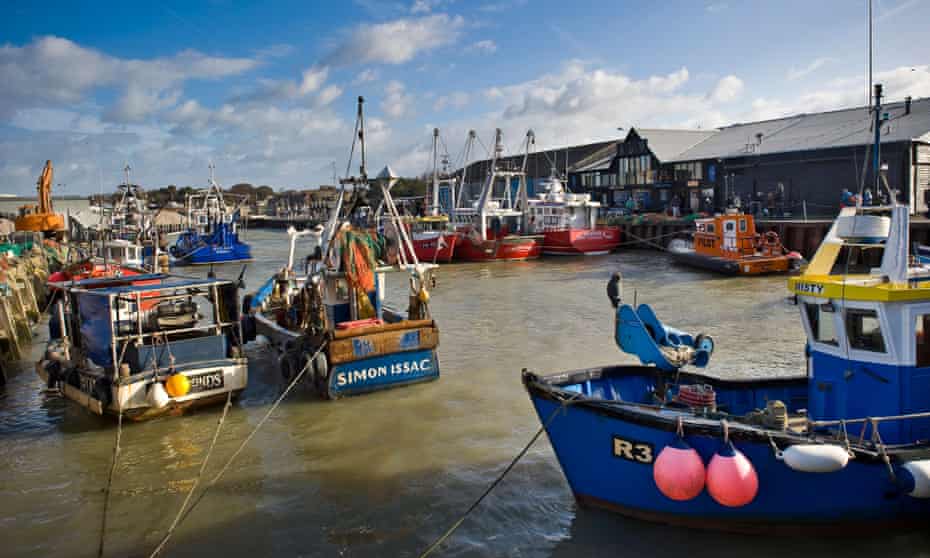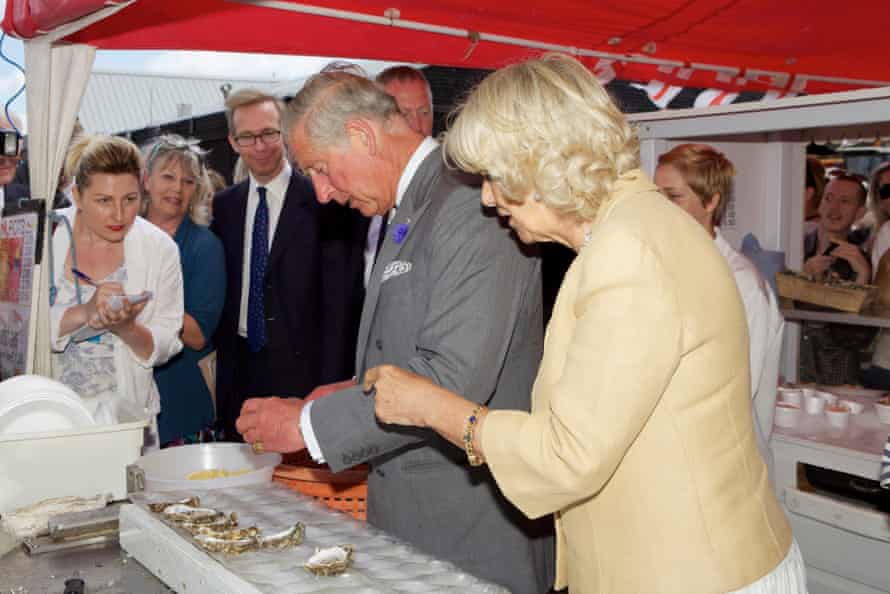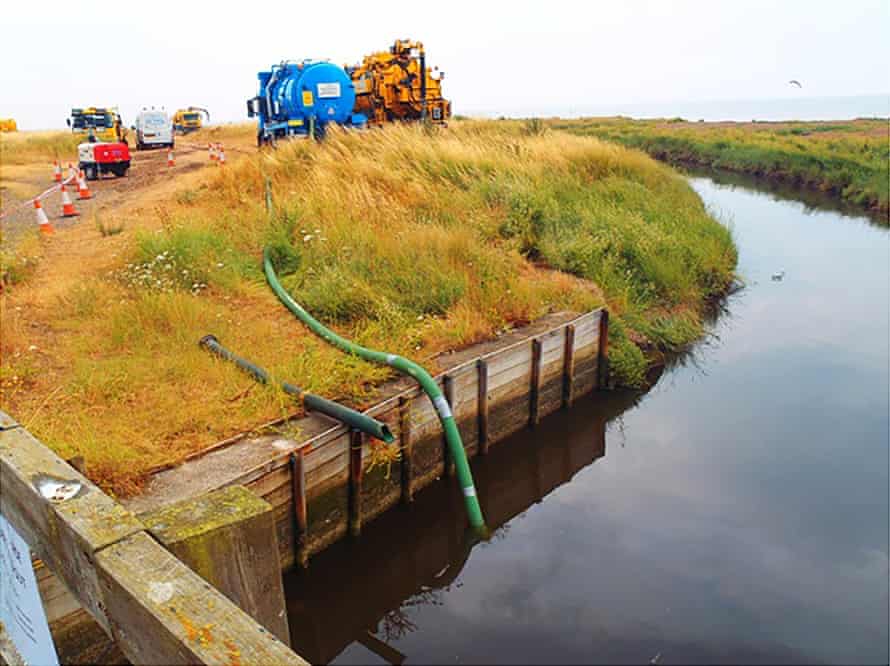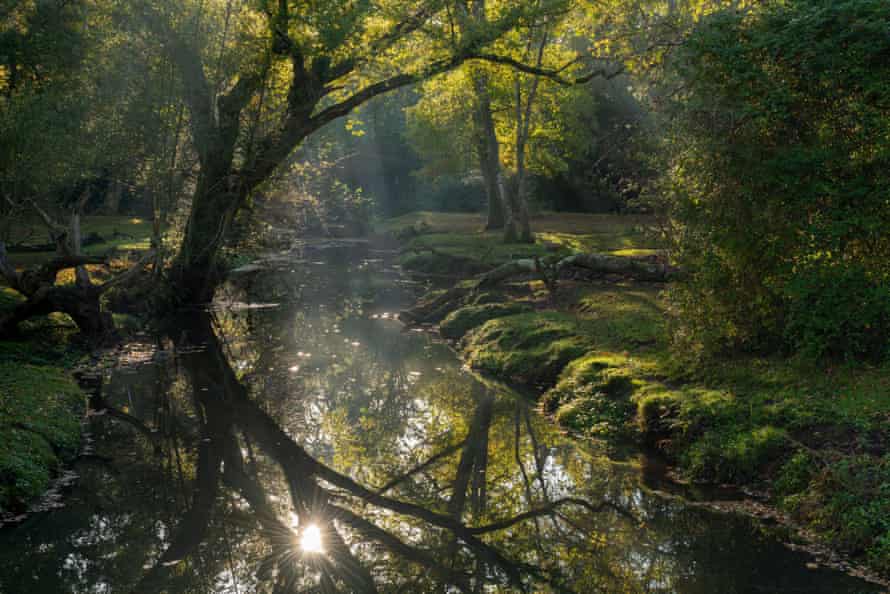Company has been issued with a huge fine but those affected by its actions are finding it hard to celebrate
The town of Whitstable sits on the north Kent coast, home to the oysters that have brought it worldwide fame from waters that are some of the most protected in Europe.
Celebrities, royals, tourists and locals flock to its annual festival to taste the native Whitstable oyster. But in 2013 the pollution in the sea where the famous oysters feed was so extreme that the Prince of Wales, the Duchess of Cornwall and other high-profile guests had to be served Irish shellfish hastily imported for the occasion.


It was one of a string of serious pollution events that forced a halt to oyster harvesting off the Whitstable coast. For some reason – no one could work out why – the stock was failing stringent tests for the presence of faecal bacteria. And along the north Kent coast and in the shellfish waters off Hampshire, the picture was the same: a year-on-year decline in the quality of the oysters and shellfish harvested from the protected waters.
Local councils and the Environment Agency (EA) were puzzled; they checked local farms and industries, and asked Southern Water if it had any information. But the data from the utility company was clear: no large scale pollution incidents had taken place from its treatment plants, it said.
It was only when Stephen Bailey, a tenacious local agency official, decided to take a closer look at the wastewater treatment plants run by Southern which fed into the seas off north Kent that the truth began to emerge.
Arriving at one plant, he was met with such resistance and obstruction his suspicions were heightened. So he and colleagues carried on, relentlessly chasing down evidence from a mountain of data.
It would take seven years, and test the determination of Bailey and his colleagues to the extreme, but their investigation uncovered what a court heard was a tale of deliberate corporate wrongdoing and cover-up on the largest scale seen in the 25-year history of the EA.
The water company, which charges its customers to safely treat their sewage, had chosen instead to dump hundreds of millions of litres of raw effluent into protected marine environments because that was cheaper. It had been going on for years and is still the subject of an ongoing criminal inquiry by the EA.
Bailey’s meticulous trail of evidence, garnered from seizing site diaries, examining documents and data and interviewing staff, exposed the reality of the privatised water company’s operations.
Crumbling infrastructure was propped up with make-and-mend measures for years, vital pumps at sewage works were broken and human effluent was stored illegally for weeks in tanks that were then opened to allow the noxious poisons to flow into the sea.
“The facts reveal long-term corporate knowledge of the situation,” Andrew Marshall, prosecuting, told the court. “The company did not pay for the maintenance and repair of its equipment or the improvements necessary. It under-reported its performance. There has been considerable financial advantage to the company … It was being paid for something it was not doing.”
The investigation, Operation Garden, was the biggest in the history of the EA, a regulator struggling today to keep up its work because of drastic cuts to its funding. Investigators focused on 17 wastewater treatment plants in Kent and Hampshire.
Court documents reveal how the investigators visited the plants, using section 108 of the Environment Act 1995, to force staff to submit to interviews, and seized diaries to source the truth.
Their path was not made easy. The company’s lawyers instructed staff not to cooperate, court documents show, and EA officials were accused by Southern Water lawyers of abuse and intimidation. During one visit to a wastewater treatment plant at Queenborough on the Isle of Sheppey, as EA officials bagged site diaries in evidence, a member of staff removed them and locked them in a cupboard. Three members of staff were later convicted of obstructing EA officials during the investigation.
Once inside Southern Water’s facilities, the reality of how the private company ran operations to safely treat sewage and wastewater was all too apparent. Instead of treating the volume of sewage it was required to by law at each treatment plant, the company was holding enormous volumes of raw sewage in storm tanks and discharging it into the sea. Then Southern covered this up by manipulating the data it submitted to the authorities to avoid more than GBP90m in penalties for non-compliance with environmental regulations.

At Swalecliffe treatment plant near Whitstable, a local resident showed EA investigators how sewage was gathering on a footpath beside the brook used regularly by schoolchildren, and en route to Tankerton beach. Inside the gates, the official saw storm tanks discharging untreated sewage and was told by staff the site could not cope with the volumes it had to deal with.
At the Sittingbourne works in north Kent, a vital automated pump had not worked for months. An investigator noted a “full storm tank with thick crust of solid sewage debris”. Returning seven days later, the same tank was still full and the sewage was turning toxic.
At Millbrook in Hampshire, a plant that serves 136,000 people, Southern Water illegally dumped nearly 1bn litres of raw sewage – enough to fill 371 Olympic-sized swimming pools – into waters that should have been home to a thriving shellfish industry.
At the Budds Farm works in Havant, Hampshire, raw sewage poured into Langstone harbour, a tidal bay popular with swimmers, sailors and paddleboarders.

Entries in site diaries reveal how routinely Southern was discharging effluent into the sea as its decrepit infrastructure struggled to cope. “Major storm event overflowed to Brockhampton with only two storm tanks full, every pump working to its max but it has hit so fast nothing can cope. Overflowing overflow down the road and right down to the visitors car park,” one entry read.
Richard Stapley, the chair of the Havant sea angling club, described in a victim impact statement how just after New Year’s Day in January 2016, the plant was pumping sewage into the sea. “It carried on for four or five days … sanitary towels, condoms and tissues could be seen caught in the mooring lines of the vessels … the water was milky white … [there was a] disgusting and strong smell of sewage,” he said.
No beauty spot seemed immune from being used as an open sewer. The small village of Beaulieu sits within the New Forest national park. Pollution in the river there was such that shellfish harvesting had been prohibited because the water quality was so poor. The investigation found that Southern Water illegally discharged raw sewage into the small river 176 times, for 3,950 hours. The longest spill lasted 19 days.

Investigators found that over the period 2010-15, the company was deliberately responsible for more than 8,400 illegal sewage discharges, which amounted to 61,704 hours of releases, or a duration of seven years. Yet company data purported to show many of these were perfectly within the remit of the operating permits issued by the EA.
Southern Water has pleaded guilty to 51 counts of knowingly permitting entry to coastal waters of poisonous, noxious or polluting matter and/or waste matter and/or sewage effluent, namely untreated sewage otherwise than as authorised by an environmental permit.
“It was known about and permitted at a high level in the company, was brought about deliberately and by a deliberate lack of control and investment and … has caused very considerable environmental damage by the release of raw sewage into coastal waters,” Marshall told Canterbury crown court.
“The chain of harm is simple and compounded. The sewage contains all sorts of waste including human pathogens. Its discharge to coastal waters is itself environmental harm. However, there it contaminates shellfish and therefore either inhibits or prevents their [economic] harvesting or, instead the contaminated shellfish are harvested and enter the human food chain where they may cause serious harm to humans.”
As Southern Water was given one of the largest fines in the history of environmental prosecutions, James Green, the director of the Whitstable Oyster Company, found it hard to celebrate. He said sewage discharges were still blighting the seas. In 2020 EA data shows Southern discharged raw sewage 19,782 times over more than 197,000 hours via storm overflows.
“None of what was uncovered was a surprise to me,” he said. “Why has it taken nearly eight years to bring them to account? It is a lack of investment in infrastructure which is the problem and it is having a major impact on water quality. It seems to be cheaper for them to go to court and to face the fines than to invest in the necessary improvements.”